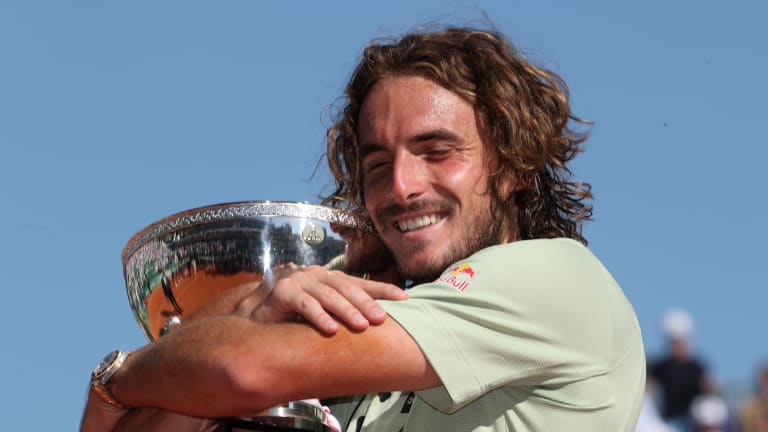ATP Monte Carlo, Monaco
Back on clay, and with his father back in the stands, Stefanos Tsitsipas returned to form and defended his Monte Carlo crown
By Apr 17, 2022ATP Monte Carlo, Monaco
Monte Carlo takeaways: Alcaraz wins by playing for himself, one-handed backhands hold firm
By Apr 14, 2025ATP Monte Carlo, Monaco
Carlos Alcaraz overcomes worn-out Lorenzo Musetti for first title in Monte Carlo
By Apr 13, 2025ATP Monte Carlo, Monaco
Carlos Alcaraz vs. Lorenzo Musetti: Where to watch, and who will win, their Monte Carlo final
By Apr 12, 2025ATP Monte Carlo, Monaco
Carlos Alcaraz charges past Alejandro Davidovich Fokina to reach Monte Carlo final
By Apr 12, 2025ATP Monte Carlo, Monaco
Alex de Minaur: 6-0, 6-0 win over Grigor Dimitrov in Monte Carlo was 'bizarre'
By Apr 11, 2025ATP Monte Carlo, Monaco
Carlos Alcaraz vs. Alejandro Davidovich Fokina: Where to Watch, Monte Carlo Preview, Betting Odds
By Apr 11, 2025ATP Monte Carlo, Monaco
Alex de Minaur vs. Lorenzo Musetti: Where to Watch, Monte Carlo Preview, Betting Odds
By Apr 11, 2025ATP Monte Carlo, Monaco
Carlos Alcaraz waits for his chances to clinch first clash with Arthur Fils in Monte Carlo
By Apr 11, 2025ATP Monte Carlo, Monaco
Stefanos Tsitsipas vs. Lorenzo Musetti: Where to Watch, Monte Carlo Preview, Betting Odds
By Apr 10, 2025Back on clay, and with his father back in the stands, Stefanos Tsitsipas returned to form and defended his Monte Carlo crown
On the 23-year-old’s title, and 22-year-old Alejandro Davidovich Fokina’s crowd-pleasing runner-up run.
Published Apr 17, 2022
Advertising
Advertising

Stefanos Tsitsipas successfully defended his Monte Carlo title, dropping just one set along the way.
© Getty Images
Advertising

Like Tsitsipas, Alejandro Davidovich Fokina left it all on the court—and got some court on him, in the process.
© AFP via Getty Images